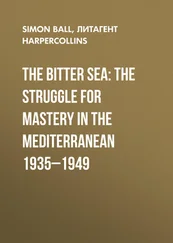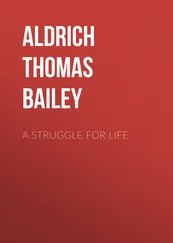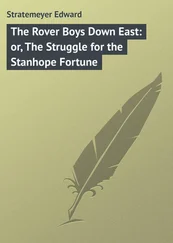Чарльз Дарвин - The Origin of Species by Means of Natural Selection Or, the Preservation of Favoured Races in the Struggle for Life
Здесь есть возможность читать онлайн «Чарльз Дарвин - The Origin of Species by Means of Natural Selection Or, the Preservation of Favoured Races in the Struggle for Life» весь текст электронной книги совершенно бесплатно (целиком полную версию без сокращений). В некоторых случаях можно слушать аудио, скачать через торрент в формате fb2 и присутствует краткое содержание. Год выпуска: 1999, Жанр: Биология, на английском языке. Описание произведения, (предисловие) а так же отзывы посетителей доступны на портале библиотеки ЛибКат.
- Название:The Origin of Species by Means of Natural Selection Or, the Preservation of Favoured Races in the Struggle for Life
- Автор:
- Жанр:
- Год:1999
- ISBN:нет данных
- Рейтинг книги:3 / 5. Голосов: 1
-
Избранное:Добавить в избранное
- Отзывы:
-
Ваша оценка:
- 60
- 1
- 2
- 3
- 4
- 5
The Origin of Species by Means of Natural Selection Or, the Preservation of Favoured Races in the Struggle for Life: краткое содержание, описание и аннотация
Предлагаем к чтению аннотацию, описание, краткое содержание или предисловие (зависит от того, что написал сам автор книги «The Origin of Species by Means of Natural Selection Or, the Preservation of Favoured Races in the Struggle for Life»). Если вы не нашли необходимую информацию о книге — напишите в комментариях, мы постараемся отыскать её.
The Origin of Species by Means of Natural Selection Or, the Preservation of Favoured Races in the Struggle for Life — читать онлайн бесплатно полную книгу (весь текст) целиком
Ниже представлен текст книги, разбитый по страницам. Система сохранения места последней прочитанной страницы, позволяет с удобством читать онлайн бесплатно книгу «The Origin of Species by Means of Natural Selection Or, the Preservation of Favoured Races in the Struggle for Life», без необходимости каждый раз заново искать на чём Вы остановились. Поставьте закладку, и сможете в любой момент перейти на страницу, на которой закончили чтение.
Интервал:
Закладка:
As we may infer that our domestic animals were originally chosen by uncivilised man because they were useful, and because they bred readily under confinement, and not because they were subsequently found capable of far-extended transportation, the common and extraordinary capacity in our domestic animals of not only withstanding the most different climates, but of being perfectly fertile (a far severer test) under them, may be used as an argument that a large proportion of other animals now in a state of nature could easily be brought to bear widely different climates. We must not, however, push the foregoing argument too far, on account of the probable origin of some of our domestic animals from several wild stocks: the blood, for instance, of a tropical and arctic wolf may perhaps be mingled in our domestic breeds. The rat and mouse cannot be considered as domestic animals, but they have been transported by man to many parts of the world, and now have a far wider range than any other rodent; for they live under the cold climate of Faroe in the north and of the Falklands in the south, and on many an island in the torrid zones. Hence adaptation to any special climate may be looked at as a quality readily grafted on an innate wide flexibility of constitution, common to most animals. On this view, the capacity of enduring the most different climates by man himself and by his domestic animals, and the fact of the extinct elephant and rhinoceros having formerly endured a glacial climate, whereas the living species are now all tropical or sub-tropical in their habits, ought not to be looked at as anomalies, but as examples of a very common flexibility of constitution, brought, under peculiar circumstances, into action.
How much of the acclimatisation of species to any peculiar climate is due to mere habit, and how much to the natural selection of varieties having different innate constitutions, and how much to both means combined, is an obscure question. That habit or custom has some influence, I must believe, both from analogy and from the incessant advice given in agricultural works, even in the ancient Encyclopaedias of China, to be very cautious in transporting animals from one district to another. And as it is not likely that man should have succeeded in selecting so many breeds and sub-breeds with constitutions specially fitted for their own districts, the result must, I think, be due to habit. On the other hand, natural selection would inevitably tend to preserve those individuals which were born with constitutions best adapted to any country which they inhabited. In treatises on many kinds of cultivated plants, certain varieties are said to withstand certain climates better than others; this is strikingly shown in works on fruit-trees published in the United States, in which certain varieties are habitually recommended for the northern and others for the southern states; and as most of these varieties are of recent origin, they cannot owe their constitutional differences to habit. The case of the Jerusalem artichoke, which is never propagated in England by seed, and of which, consequently, new varieties have not been produced, has even been advanced, as proving that acclimatisation cannot be effected, for it is now as tender as ever it was! The case, also, of the kidney-bean has been often cited for a similar purpose, and with much greater weight; but until some one will sow, during a score of generations, his kidney-beans so early that a very large proportion are destroyed by frost, and then collect seed from the few survivors, with care to prevent accidental crosses, and then again get seed from these seedlings, with the same precautions, the experiment cannot be said to have been even tried. Nor let it be supposed that differences in the constitution of seedling kidney-beans never appear, for an account has been published how much more hardy some seedlings are than others; and of this fact I have myself observed striking instances.
On the whole, we may conclude that habit, or use and disuse, have, in some cases, played a considerable part in the modification of the constitution and structure; but that the effects have often been largely combined with, and sometimes overmastered by, the natural selection of innate variations.
CORRELATED VARIATION.
I mean by this expression that the whole organisation is so tied together, during its growth and development, that when slight variations in any one part occur and are accumulated through natural selection, other parts become modified. This is a very important subject, most imperfectly understood, and no doubt wholly different classes of facts may be here easily confounded together. We shall presently see that simple inheritance often gives the false appearance of correlation. One of the most obvious real cases is, that variations of structure arising in the young or larvae naturally tend to affect the structure of the mature animal. The several parts which are homologous, and which, at an early embryonic period, are identical in structure, and which are necessarily exposed to similar conditions, seem eminently liable to vary in a like manner: we see this in the right and left sides of the body varying in the same manner; in the front and hind legs, and even in the jaws and limbs, varying together, for the lower jaw is believed by some anatomists to be homologous with the limbs. These tendencies, I do not doubt, may be mastered more or less completely by natural selection: thus a family of stags once existed with an antler only on one side; and if this had been of any great use to the breed, it might probably have been rendered permanent by natural selection.
Homologous parts, as has been remarked by some authors, tend to cohere; this is often seen in monstrous plants: and nothing is more common than the union of homologous parts in normal structures, as in the union of the petals into a tube. Hard parts seem to affect the form of adjoining soft parts; it is believed by some authors that with birds the diversity in the shape of the pelvis causes the remarkable diversity in the shape of the kidneys. Others believe that the shape of the pelvis in the human mother influences by pressure the shape of the head of the child. In snakes, according to Schlegel, the shape of the body and the manner of swallowing determine the position and form of several of the most important viscera.
The nature of the bond is frequently quite obscure. M. Is. Geoffroy St. Hilaire has forcibly remarked that certain malconformations frequently, and that others rarely, coexist without our being able to assign any reason. What can be more singular than the relation in cats between complete whiteness and blue eyes with deafness, or between the tortoise-shell colour and the female sex; or in pigeons, between their feathered feet and skin betwixt the outer toes, or between the presence of more or less down on the young pigeon when first hatched, with the future colour of its plumage; or, again, the relation between the hair and the teeth in the naked Turkish dog, though here no doubt homology comes into play? With respect to this latter case of correlation, I think it can hardly be accidental that the two orders of mammals which are most abnormal in their dermal covering, viz., Cetacea (whales) and Edentata (armadilloes, scaly ant-eaters, etc.), are likewise on the whole the most abnormal in their teeth, but there are so many exceptions to this rule, as Mr. Mivart has remarked, that it has little value.
I know of no case better adapted to show the importance of the laws of correlation and variation, independently of utility, and therefore of natural selection, than that of the difference between the outer and inner flowers in some Compositous and Umbelliferous plants. Everyone is familiar with the difference between the ray and central florets of, for instance, the daisy, and this difference is often accompanied with the partial or complete abortion of the reproductive organs. But in some of these plants the seeds also differ in shape and sculpture. These differences have sometimes been attributed to the pressure of the involucra on the florets, or to their mutual pressure, and the shape of the seeds in the ray-florets of some Compositae countenances this idea; but with the Umbelliferae it is by no means, as Dr. Hooker informs me, the species with the densest heads which most frequently differ in their inner and outer flowers. It might have been thought that the development of the ray-petals, by drawing nourishment from the reproductive organs causes their abortion; but this can hardly be the sole case, for in some Compositae the seeds of the outer and inner florets differ, without any difference in the corolla. Possibly these several differences may be connected with the different flow of nutriment towards the central and external flowers. We know, at least, that with irregular flowers those nearest to the axis are most subject to peloria, that is to become abnormally symmetrical. I may add, as an instance of this fact, and as a striking case of correlation, that in many pelargoniums the two upper petals in the central flower of the truss often lose their patches of darker colour; and when this occurs, the adherent nectary is quite aborted, the central flower thus becoming peloric or regular. When the colour is absent from only one of the two upper petals, the nectary is not quite aborted but is much shortened.
Читать дальшеИнтервал:
Закладка:
Похожие книги на «The Origin of Species by Means of Natural Selection Or, the Preservation of Favoured Races in the Struggle for Life»
Представляем Вашему вниманию похожие книги на «The Origin of Species by Means of Natural Selection Or, the Preservation of Favoured Races in the Struggle for Life» списком для выбора. Мы отобрали схожую по названию и смыслу литературу в надежде предоставить читателям больше вариантов отыскать новые, интересные, ещё непрочитанные произведения.
Обсуждение, отзывы о книге «The Origin of Species by Means of Natural Selection Or, the Preservation of Favoured Races in the Struggle for Life» и просто собственные мнения читателей. Оставьте ваши комментарии, напишите, что Вы думаете о произведении, его смысле или главных героях. Укажите что конкретно понравилось, а что нет, и почему Вы так считаете.












